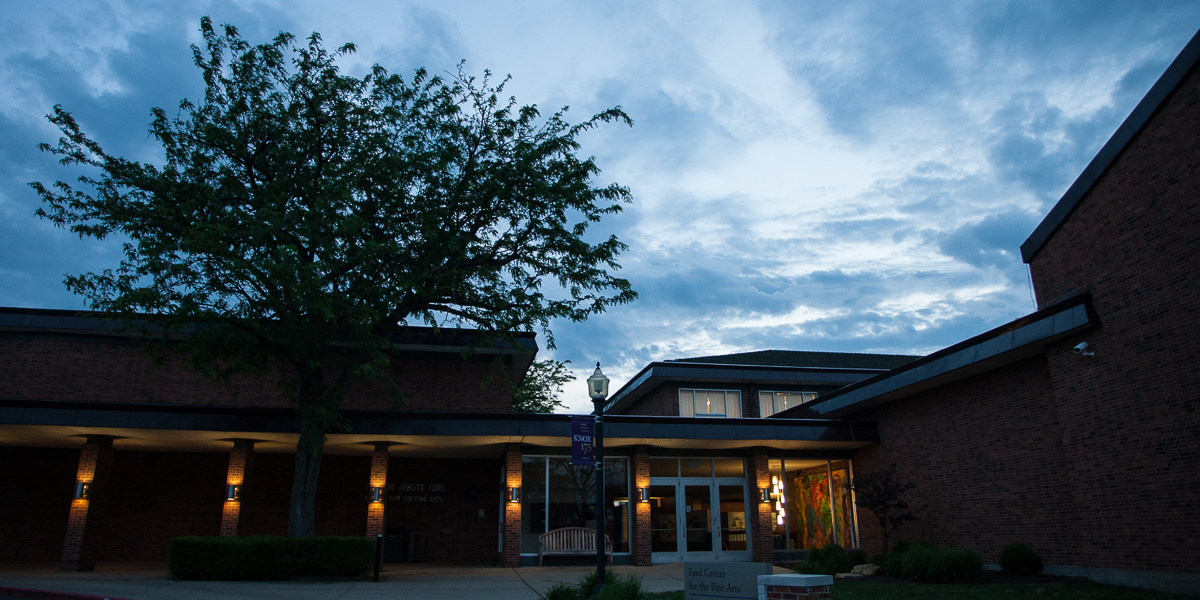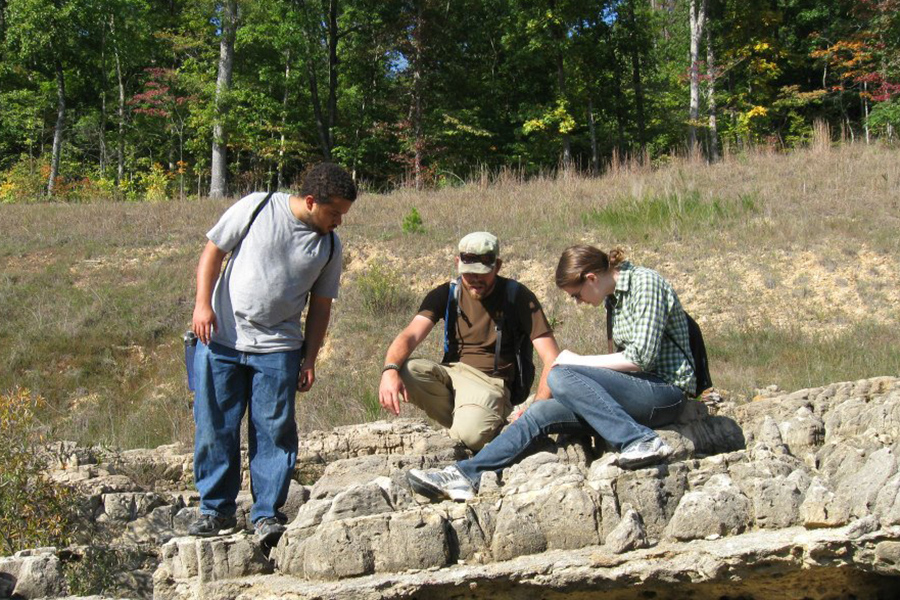


Office of Communications
2 East South Street
Galesburg, IL 61401


by Ashley Wolfgang '14
Knox College students in Professor Katherine Adelsberger's Environmental Geology course recently took a camping trip to the Saint Francois Mountains south of St. Louis, Missouri, to examine rock formations and experience geology first-hand.
"The course is an introduction to geology with a focus on human interaction with the planet -- mostly geologic hazards, and also what is our impact and what can the earth do to us," said Adelsberger, who holds The Douglas and Maria Bayer Endowed Chair in Earth Science.
Adelsberger chose the Saint Francois Mountains as a field trip location because of the site's immense history and rock variation, which ranges from Pre-Cambrian igneous rocks to upper Cambrian sedimentary rocks. Students saw rock formations they otherwise wouldn't have seen, except in the pages of their textbooks.
"There's a lot of really interesting geology there," said Justin Dingle, a Knox senior from Homewood, Illinois, majoring in environmental studies. "I didn't realize there was so much, so close to home."
Most of the formations are the result of a reservoir that was built on top of a mountain to create hydroelectric power through a system of tunnels, said Adelsberger. (Photo at top of page: Students examine Cambrian rocks in the Saint Francois Mountains in Missouri.
"The reservoir wall failed in 2005, so we had this big reservoir of water that fell," said Adelsberger. "This exposed a lot of the bedrock, so there's this hike you can take to see the erosion that has happened, and also to see the exposed bedrock."
"You get this combination of bedrock geology," she added. "You can see rhyolites and granite, which you can't see around here."
During the camping trip, students were required to do field work by filling out various questionnaires about the area.
"It was a lot of hiking, walking up and down mountains," she said. "But for the most part it was more of a discussion/analysis activity."
On a separate trip, students in the class also traveled to Mississippi Palisades State Park in northwestern Illinois for further study.
"It's interesting because it allows us to see the unglaciated part of the state," said Adelsberger. "We can talk about glacial deposits and where they have or have not gone, and we can see some bedrock. There's not as great variation as a place like southern Missouri, but there is still (material) that we're talking about in class."
"It really helps to actually, visually, see the stuff we talk about," said Dingle, who is also double-minoring in earth science and Japanese studies. "Hands-on experience really helps."
Published on November 21, 2012